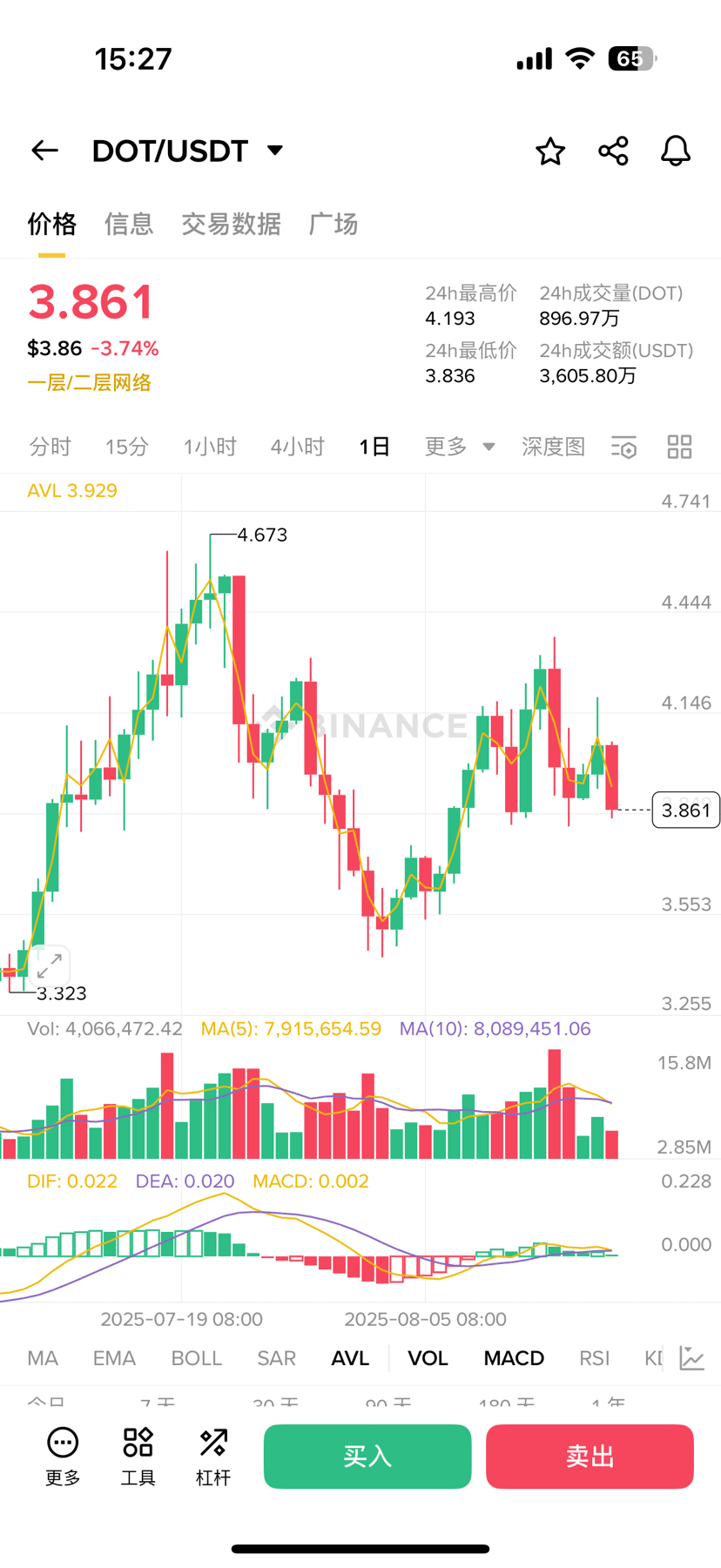What was the scale of EOS back in the day? A top-tier team, a leading narrative, and top resources all in one - BM (Daniel Larimer) personally led the charge, proclaiming to 'disrupt Ethereum,' raising 4 billion dollars in a single funding round. But what was the final result? As the market evolved, EOS gradually became an 'artifact' on-chain, with diminishing market attention.
Looking at DOT now, it somewhat resembles the EOS of yesteryear. Similarly top-tier setup led by Gavin Wood; the narrative focuses on cross-chain, parachain slots, and shared security, concepts that sound quite grand. But the core logic of the crypto space has never been 'optimal technology'; rather, it is 'narratives that can be implemented and capital that can flow' — whoever can tell the story well and attract funding will be the one to truly establish themselves.
Specifically, DOT is currently facing three real dilemmas:
1. The narrative has become outdated: Cross-chain was absolutely top-tier in 2020-2021, but now it has been squeezed out of the conversation by new concepts like L2, OP Stack, and EigenLayer. In other words, the 'cross-chain issue' that DOT aimed to solve back then is no longer the core demand of the market.
2. Low on-chain activity: While Polkadot's developers and ecosystem haven't completely disappeared, compared to Solana, Ethereum, or even Base, the heat is not on the same level. Without active capital entering the market, even the best narrative will struggle to resonate.
3. Token model is a hindrance: DOT itself has a relatively high inflation rate, while market demand is relatively weak; even with a staking lock-up mechanism, it has not formed a genuine 'demand support.' Unlike ETH with gas fees or SOL with high-frequency applications backing it, DOT currently lacks a core buying logic.
So why hasn't DOT completely 'cooled down'? The core revolves around three points of support:
• Strong background: Top-tier VCs and institutions hold positions and will not let it easily head towards zero.
• Team reputation still intact: Gavin Wood is a recognized top developer in the crypto space, and the team's technical strength remains strong.
• Backed by a long-standing identity: As a veteran in the cross-chain space, it still holds a place in the foundational narrative of institutions.
Based on this, my opinion is as follows:
• Short Term: It is difficult for DOT to become a core target of mainstream market trends. Current capital is more inclined to chase SOL, ETH, or popular tracks like new and old public chains and RWA, making it likely that DOT can only passively follow the market and struggle to have an independent trend.
• Medium Term: If a new narrative breakthrough can be found (for example, integrating cross-chain with AI and RWA), there is still a chance for it to be re-excited.
• Long Term: It will either head towards marginalization or rely on the team to create a 'New Narrative 2.0' breakthrough; otherwise, the price will likely maintain a 'tasteless yet regrettable' state.
Overall, DOT feels a lot like EOS back in the day: it won't 'perish' immediately, but it is also very difficult to expect a resurgence. If one wants to allocate, it is advisable to treat it as a defensive position; if expecting it to emerge in an independent bull market like SOL, the likelihood is relatively low.$BTC $ETH #加密市场回调 #美联储取消创新活动监管计划 #BitDigital转型 

